Building
For Preppers, Papercrete Is The New Concrete
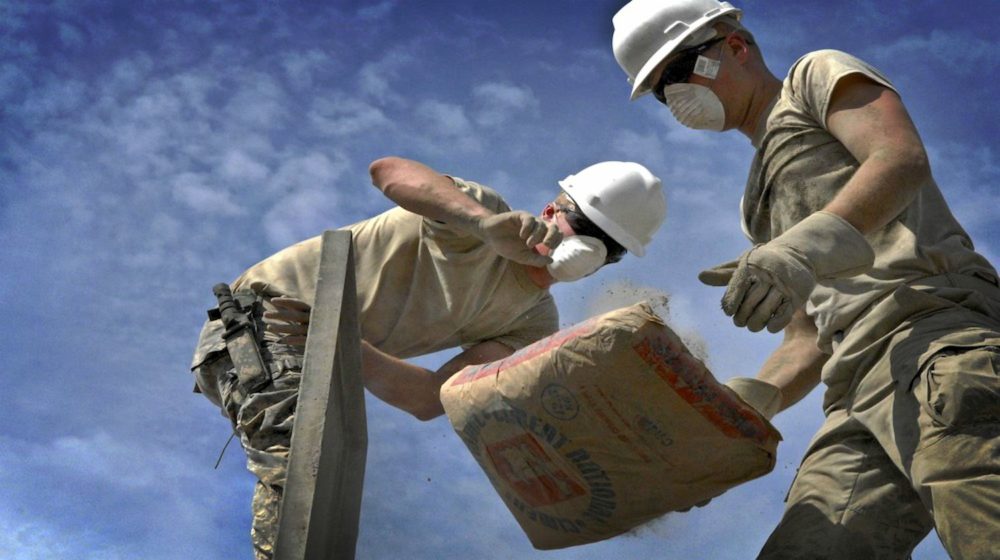
Papercrete is the ultimate building material for preppers, homesteaders, and off-grid living enthusiasts. Learn more about it here!
RELATED:9 Unique DIY Homesteading Projects
Things You Need to Know About Papercrete House
Papercrete Definition: An environment-friendly building material made from clay, Portland cement, and re-pulped paper. It can be made into sheets or blocks for construction use.
Papercrete Building Blocks
Not only is the building material incredibly inexpensive and Earth-friendly, but it is also extremely durable, especially if you know the process of waterproofing papercrete.
You can make papercrete building blocks by up-cycling used or discarded paper products.
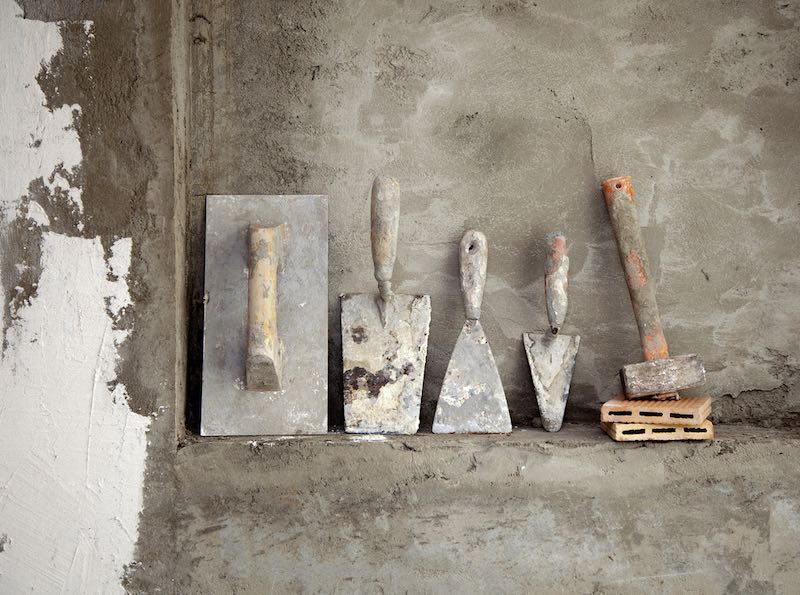
They often have a sturdy frame of possibly rebar and metal lath added for support as well.
Papercrete Home Style
Most preppers build a prepper retreat, homestead, or an off-the-grid home with a tight budget with self-sufficiency in mind.
Paper concrete or papercrete homes are not exactly a new concept. It is undergoing a rapid resurgence and expansion around the world.
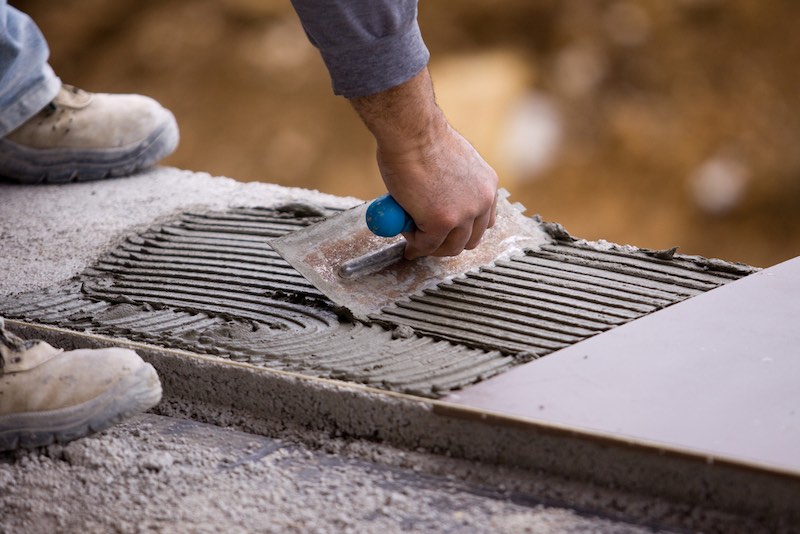
Canvas concrete-style temporary structures have been used by the military for decades.
History of Papercrete
Papercrete was first developed in the late 1920s. In 1976, John Hall, an art student majoring in sculpture, experimented with paper mache and added gypsum plaster to the mix.
Papercrete got its name from the very formula used to make it — a mixture of cement with cellulose fiber and water.
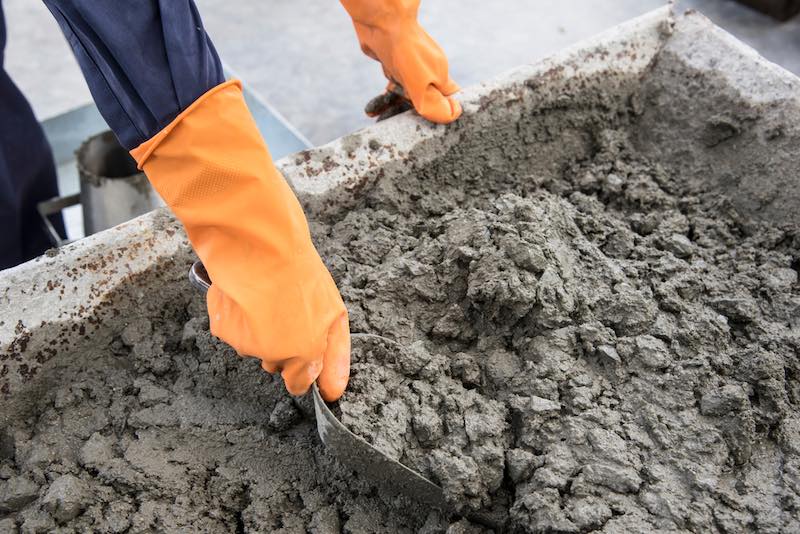
The compound has the texture and appearance of oatmeal, which is poured into molds and placed under the sun to dry. This process is similar to making Adobe.
Zach Rabon and Barry Fuller thoroughly studied papercrete in Texas and Arizona, respectively.
What Is Papercrete?
Papercrete is a building material composed of “re-pulped” paper fiber with clay or Portland cement, or other soil added. The material was first patented during the 1920s and experienced a revival during the late 1980s.
Many preppers disagree on the environmentally friendly nature of paper concrete. While the construction material often consists of a high percentage of recycled material, the presence of concrete also turns off some eco-building advocates.
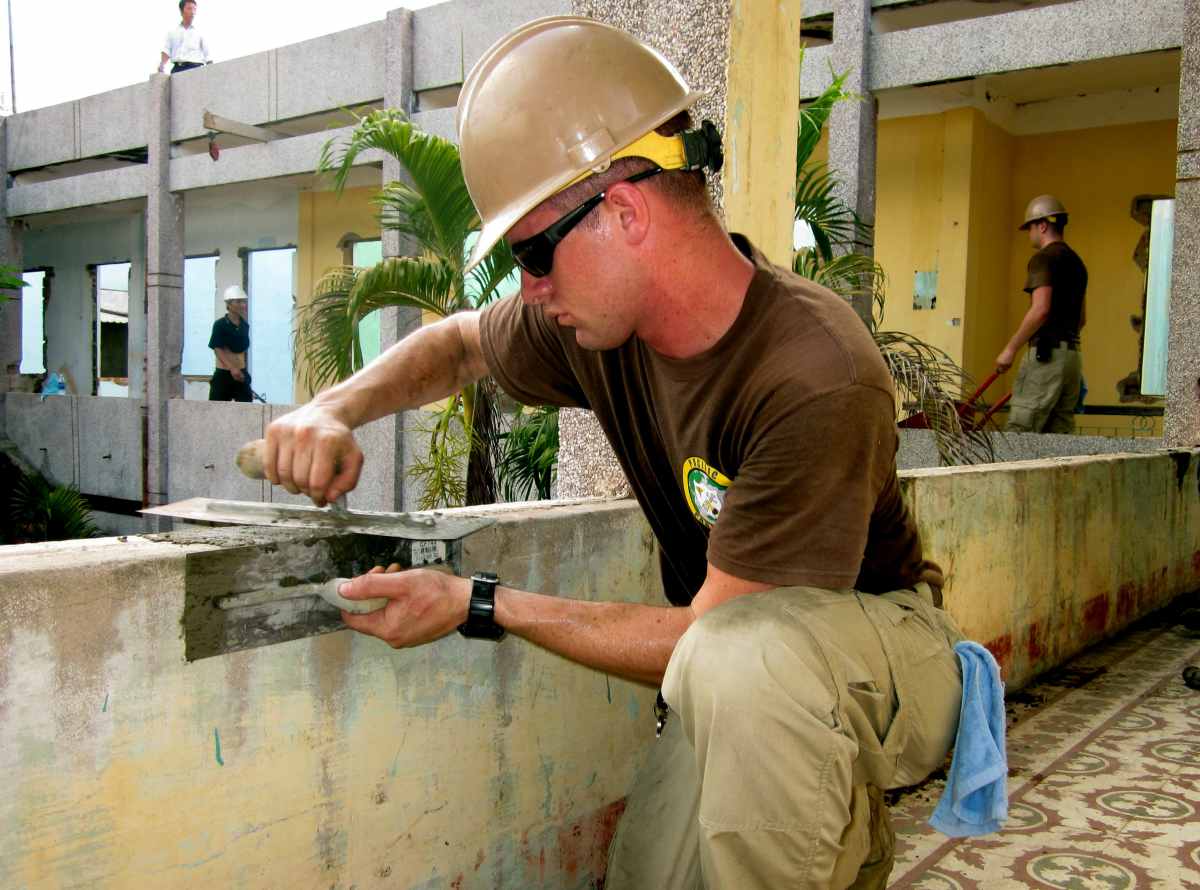
Both Mike McCain and Eric Patterson share credit for inventing papercrete. They often referred to the building material as fibrous cement and adobe.
Papercrete as an Alternative for Off-Grid Living
As with all types of off-the-grid housing alternatives, you may face some red tape buildings with this material.
Folks who live in areas bursting at the seams with permit officers, building inspectors, and zoning departments, must have every step of the project approved.
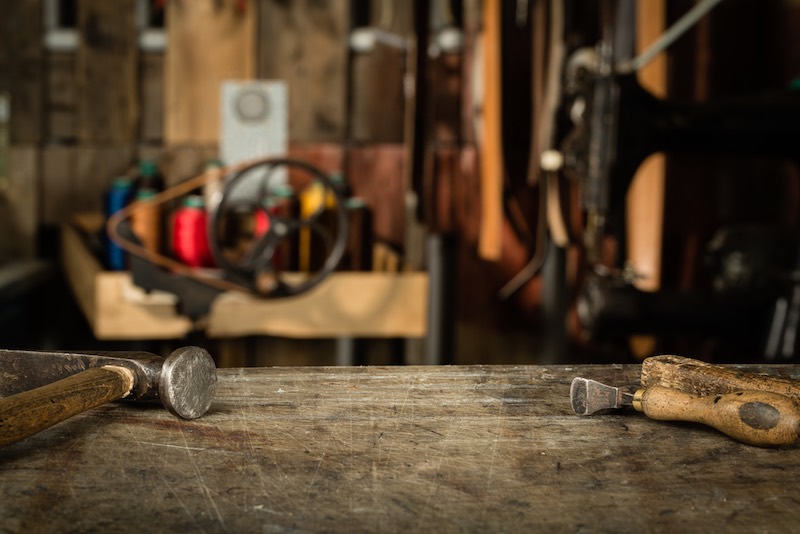
Make sure to apply for all necessary permits in advance since Papercrete may not have the approval of the International Code Council. This means you may not be able to use it within municipal limits in incorporated areas in the United States.
There is good news for preppers and homesteading advocates blessed to live in rural regions like the one I call home. You can usually just gather your materials and get building, without jumping through all sorts of government hoops.
RELATED: How To Make Homemade Survival Cement
Dome-Shaped Structures
Dome-shaped structures are very popular with paper concrete builders. Getting a building permit, where necessary, for papercrete structures that have load-bearing walls is reportedly very difficult.
Many builders feel we need to do more testing to determine if a papercrete building alone can support a roof. If the paper concrete structure will not house people, the approval process is allegedly a bit more feasible.

A post-and-beam approach when setting the foundation and starting the walls is the preferred building method for both safety and inspection reasons.
Papercrete is also highly regarded for its insulation properties. Walls of paper concrete storage buildings, barns, and homes are typically 10 to 12 inches thick.
Homeowners love papercrete for its mold resistance and “sound-proofing” qualities. Unlike adobe or concrete blocks, papercrete blocks are very lightweight.
This material is about a third of the weight of a similarly sized adobe brick.
Papercrete Tips
- You can mix papercrete in various methods. Different kinds of papercrete comprise 50-80% waste paper!
- There are still no hard and fast rules. Industry leaders should undoubtedly establish recommended standards in the near future.
- The primary components are water and almost any type of paper. You can use cardboard papercrete, stock paper, advertising leaflets, glossy magazines, junk mail, or any type of lower-grade paper.
- Some types of paper might work better than the others, but all types will absolutely work. Newspaper works great.
- Cardboard, waterproof papers, butcher paper, beer cartons, and the like are tougher and won't easily break down in the water. Magazines, catalogs and other different publications are great. Some magazines have a stringy, rubbery, gluey spine, which is also water-resistant. It can be challenging to break down this type of material while in the process of mixing. Strings and tiny pieces of these materials are most of the time present in the final mix.
- Common additives to the paper concrete mixes, in addition to Portland cement and clay, often include sand, glass, and “fly ash.”
- You must impale or drill the first three or so papercrete applications securely on top of the rebar set in the concrete foundation. The rebar is necessary to prevent wall movement in a horizontal direction. Once only a couple of inches of the rebar is showing, lay another piece or rebar and wire it to the vertical pieces protruding from the foundation.
- Papercrete builders then recommend pounding the vertical piece of rebar until it is almost level with the papercrete block. Once done, cover the emerging wall with your papercrete mortar of choice and start the next row of blocks.
- Wait at least several weeks for the walls to settle before installing doors and windows. You can frame the wall and window area by leaving rebar out as you build the wall in the desired spots, or use a chainsaw and cut the openings out later.
How Strong Is Papercrete?
In structural tests, paper concrete has reportedly tested in the 140-160 psi range. Some claim the strength reaches into the 260 psi range.
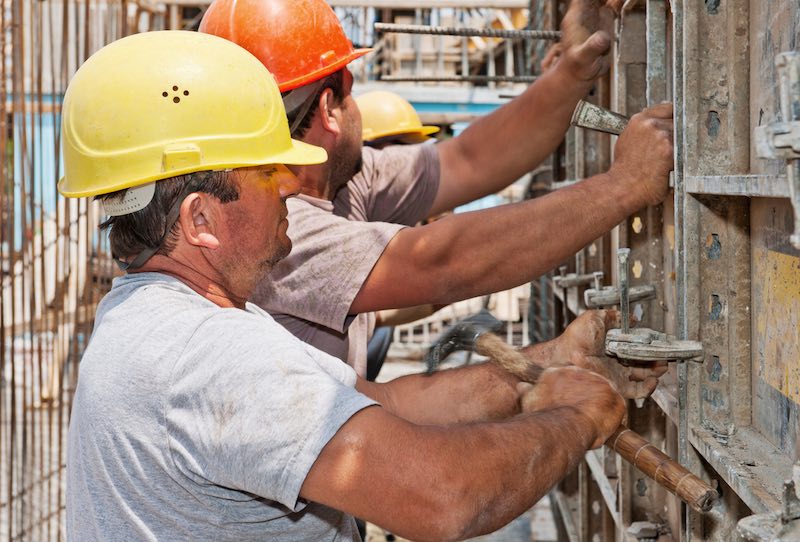
While papercrete is less stiff than a solid concrete building, it is reportedly strong enough to hold the heavy loads of a roof on “low-height” buildings.
Two-story structures have been built with concrete and are very attractive and appear to be sturdy homes.
Papercrete Mixing Materials
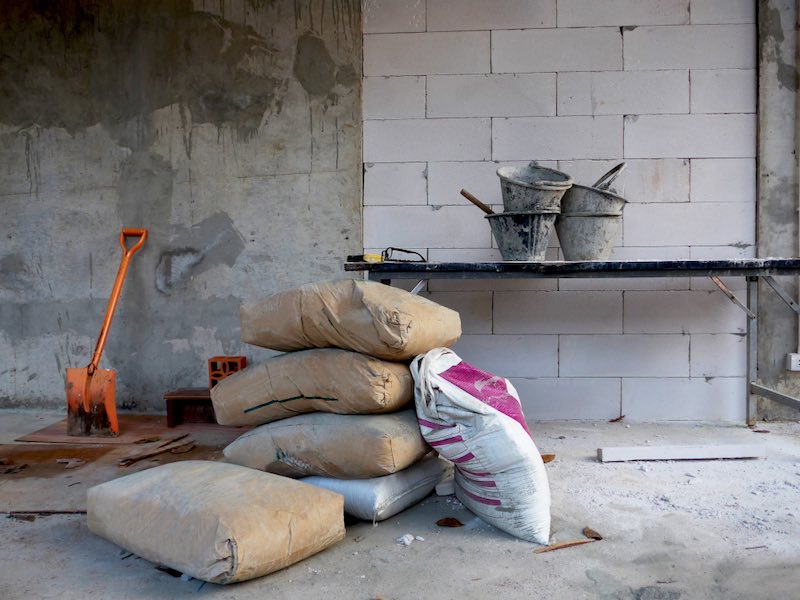
- Newspapers
- Cardboard food boxes
- Shoe boxes
- Paper sacks
- Food can labels
- Mail envelopes
- Fast food wrappers, soft drink cups, and French fry holders
- Cardboard shipping boxes
- Wrapping paper
- Toilet and paper towel cardboard rolls
- Pet food bags
- Juice boxes — cut open and allow to dry thoroughly
- Soft drink and beer cardboard cases
- Used poster board, construction paper, and discarded homework and folders
Use wood harvested from your own property to make papercrete projects more cost-effective. Unlike some commercial building materials, papercrete does not contain any potentially harmful chemicals that can hurt livestock.
You can paint papercrete after applying the stucco, or tint the Portland cement to create a more pleasing appearance if desired.
When I first made papercrete, I started with a small batch in a 5-gallon bucket and used a standard drill with a stucco bit. Remember: the mixing instructions often found online are merely estimates.
I used the least amount of water to avoid ruining the batch and added more as needed.
An Unsolicited Tip
Before embarking on mixing enough papercrete to build a barn, home, or shed, make a dozen or so small batches and use the material to make some hand-poured blocks.
Once you have the mixture amounts ironed out, run larger batches through the stock-tank homemade mixer.
Watch this video from Char’s Nest and find out how to make papercrete:
You can save a lot of money when you build with papercrete. Even if you already have an off-the-grid home or prepper retreat constructed, papercrete is still an option for you.
There are tons of papercrete uses. You can build outbuildings, cellars, storm shelters, barns, and papercrete buildings from upcycled paper products.
This will help you save funds and provide added livestock shelter and storage for preps.
Have you tried making papercrete? How does it work for you? Tell us about your experience in the comments section below! Up Next:
- Homesteading And Sustainability – How To Become Self-Reliant
- How To Make A War Hammer
- 7 Genius Seedling Greenhouses You Can Make Today
Calling all preppers, craftsmen, bushmasters, outdoorsmen, and all-around skilled people, Survival Life needs YOU! Click here if you want to write for us.
Don’t forget to stay connected with us on Facebook, Twitter, Pinterest, and Instagram!
**Disclaimer: All content on this site is for informational purposes only. Please read our full disclaimer here**
Editor’s Note: This post was originally published on April 25, 2018, and has been updated for quality and relevancy.
-

 Paracord Projects11 months ago
Paracord Projects11 months agoParacord Projects | 36 Cool Paracord Ideas For Your Paracord Survival Projects
-

 Paracord Projects1 year ago
Paracord Projects1 year agoHow To Make Paracord Survival Bracelets | DIY Survival Prepping
-

 Medical Care1 year ago
Medical Care1 year ago21 Home Remedies For Toothache Pain Relief
-

 Knife Laws12 months ago
Knife Laws12 months agoAre Switchblades Legal? Knife Laws By State
-

 Do It Yourself1 year ago
Do It Yourself1 year agoSurvival DIY: How To Melt Aluminum Cans For Casting



John G
June 27, 2014 at 10:49 AM
I attended a workshop by Mike McCain years ago in Arizona,
In his videos and book he shows much easier ways to make papercrete
than what the person in the video is going through. His methods are much faster and inexpensive.
Lauren J
June 27, 2014 at 11:17 AM
Thanks for the tip, John!
Stefan
July 14, 2014 at 7:21 PM
Is there a web site? I like to know thank you.
CAPERNIUS
July 27, 2014 at 7:24 AM
I’ll admit to being totally ignorant(no knowledge of) to the making of this material….
I’m thinking that if you’re going to be mixing concrete, water, clay & paper, why not use a cement mixer?
those machines will do a whole lot more than just mix concrete….I use one in my garden all the time for dirt/fertilizer/mulch/etc…have yet to find anything that mixes materials up as well…but then again, this papercrete is different from anything I have ever used….
CelticCoyote
June 27, 2014 at 12:00 PM
How would shredded paper work in this. I work in an office that has to shred everything and we always have 50 gal bags of shredded paper available. I’d rather use the paper than throw it in the dumpster if possible. Thanks for the info on this, I’m going to try it out after I get your answer.
Stefan
February 27, 2015 at 2:36 PM
No. I do not have a website, sorry.
dan-o
January 24, 2019 at 3:04 PM
Masongreenstar is the web page. I built a house with these blocks. Very forgiving and fun to work with. Super insulation. Bullet proof…at least 5.56 and hand gun loads. I tested the walls myself!
Norm
April 29, 2018 at 8:27 AM
my thoughts about shredded paper is that it would almost be perfect
Michael
October 22, 2018 at 9:03 PM
Since the use of a stucco bit on a drill is suggested, I would think shredded paper would work great. I saw something similar done on youtube in a bucket. The paper was put into the bucket and mixed into a highly shredded paste(?). Then another bucket went in on top, weight was applied to squeeze out the water. Then it was left to dry.
They were making firebricks in this case. Adjust the blend as required.
Kelejan
June 27, 2014 at 1:05 PM
Celtic Coyote, I, too, have access to a supply of shredded paper and wondering if papercrete walls in a garden would be feasable. This seems doable for and elderly person in good health.
Dumb Idea
June 30, 2014 at 3:25 PM
One match and a molotov cocktail Poof Gone!!!
Anthony
July 5, 2014 at 12:49 AM
Same with a wooden house. I would like to see flamibility of this material tested, even informally.
Angel
July 19, 2014 at 8:49 AM
oscar gordon, you can go to youtube and search papercrete flam test it shows the durability.
oscar gordon
July 6, 2014 at 5:55 PM
If cement is used in your mix the papercrete is highly fire retardant or fire proof.
Laurin Desso
April 29, 2018 at 9:18 AM
Papercrete is inflammable. The Portland cement prevents it from burning. I built a house from it in Cortez which was featured in Mother Earth news with the help of Mike 20 years ago. He came up from Arizona for a few days and built a tow mixer which worked like a charm. It was constructed from an old car rear end drive and a poly 250 gallon poly water container.
Dopey Dave
July 25, 2018 at 4:49 AM
The proper term here is “non-flammable”..
The term “inflammablle” actually means that something is highly flammable / burns easily !
Pingback: Off Grid Living - What Is Papercrete?
Pingback: How To Make Papercrete - SHTF, Emergency Preparedness, Survival Prepping, Homesteading
CAPERNIUS
July 27, 2014 at 7:18 AM
I have heard of this B4, but even tho I have asked in the past, nobody has yet to answer my Questions….
1) fire resistance.
How “fire proof” is this material?
2) what about cracks in the walls, the material separating, etc.?
3) If you have concrete & clay in the mix, what do you need the paper for?
Isn’t concrete & clay by itself a good sound barrier?
and as far as insulatory properties, would not concrete and/or clay be enough to keep out the cold?? or the heat??
Dopey Dave
July 25, 2018 at 4:56 AM
Re: your point # 3 :
Concrete by itself is not a good insulator — just try standing on a bare concrete floor on a cold winter’s day..
Shredded paper and cardbord, straw, hay, sawdust and wood pulp,, fibreglass fibres could all add both stremgth and some insulation, and produce much lighter bricks or blocks.
Grampa
July 28, 2014 at 12:19 PM
I saw a comment about flammability Paper is used in blown in insulation. The fire retardant that is used is borax. the same stuff that is used for laundry and for welding on a forge. I don’t have the quantities it would take but I know it is used in many things. It shouldn’t be hard to find out. How about someone smarter than I designing an interlock brick with the dead air space in the middle. I was going to use my grandsons sand forms but they were too small. Ok that’s my old codger contribution for today.
Grampa
Pingback: Building for Free with Papercrete | Cultivated
Mark
November 11, 2014 at 11:01 AM
That video was way longer than it needed to be.
Flux
January 10, 2015 at 5:12 PM
I’ve heard that some people in WET climates have found that STYROcrete is more durable. Any opinions on that?
Pingback: Papercrete - Info You Should Know
Pingback: What the Heck is Paper-Crete? - Dan 330
Stefan
February 27, 2015 at 2:34 PM
Nice! But I would put all pulp material on plywood and another on top like a big sandwich and slowly drive my car on top to take out the water and I would use an electric mixer to mix and pour then press with a tamper or gas tamper. It’s a whole lot quicker and more fun! Call me @ 805-452-5344 or email me at stefan.seville@att.net if you have any questions.. Thank you all for sharing what you do have! Be safe! Bye.
Stefan
February 27, 2015 at 2:42 PM
Also when you go for dumpster diving, go where there is Government and city dumpsters because they throw away a lot of paper products and especially schools! Just a side note.
Qhorse13
November 21, 2017 at 10:04 AM
She did every bit of this the hard way. The process can be easier if you THINK of how to do it. I.E. pour it into the mold and beat the air out by lifting it slightly and dropping it several times. Instead of hand loading and pressing. There are several things like this that can be done easier than what she showed. Just think
Lisa
November 30, 2017 at 10:23 AM
Will it hold up to raised bed usage? I too have too much shred, would like to use that.
David Proctor
January 5, 2018 at 8:02 PM
Wood straw, shavings and sawdust can also successfully used (mixed with a concrete mixer). I used this mixture to make concrete panels. Sawdust can also make mud bricks, and produce lightweight insulating bricks when fired, the sawdust providing some of the fuel.
Pingback: For Preppers, Papercrete Is the New Concrete - Survive!
Brian
May 4, 2018 at 3:44 PM
In about 1980 I was in the UK and watched a TV program called Tomorrow’s World. They showed how to make a brick a day from a newspaper. You put the paper in water overnight. In the morning you added/mixed in a chemical. You put the pulp in a mould. Once it was dry, it could be drilled, screwed, nailed, sawn and glued together to build structures. On top of that, it was 100% waterproof.
I thought the idea was great and have recently looked for any reference to this TV program and the amazing chemical that had been invented. However, I cannot find any trace of this anywhere.
Anyone have an idea what the chemical could have been?
Terri D Cash
November 6, 2018 at 12:08 PM
I think it was lime powder..LIME
Terri D Cash
November 6, 2018 at 12:07 PM
Any suggestions for molds would be appreciated. I’d hate to spend a fortune on moulds after having saved so much in the product.
Pingback: Ingenious Tool Hacks You Never Knew You Could Do | Survival Life
Pingback: For Preppers, Papercrete Is The New Concrete | Primitive technology
Pingback: For Preppers, Papercrete Is The New Concrete - Survival Patch
Pingback: How To Make Homemade Survival Cement | Survival Life
Pingback: How To Make Homemade Survival Cement | Primitive technology
Pingback: How To Make Homemade Survival Cement – Ultimate Survival Alerts
richard beierle
June 28, 2019 at 1:26 PM
For many years a local bussiness near Portland Oregon made large decorative plant pots from a mixture of portland cement and wood chips – i do not know the exact formula but it may have used cedar or fir chips or perhaps hemlock or alder – the large pots appeared to be durable and must have had some water resistance seeing as they were intended for growing plants – i know that wood products made of chips swell when wet and tend to debond such as chipboard used in building construction – a paper pulp formula that is made with water originaly that is drained has room to absorb water without swelling – however freezing will cause additional expansion of trapped water and may shatter the product – excluding water in freezing locals looks like a must – a coat of concrete foundation waterproofing, or what is called TACK, pavers asphalt adhesive, that goes on like paint should provide protection with one or more coats “it does a good job of sealing roofs and goes into micro cracks” – this pulp block idea should have a future as it has MANY pluses – fire and sound proofing – light weight- ease of construction – ballistic protection – Kevlar fiber can be added for people living near Schools, – This is a BIG one , Waste Management – The US is now literally Drowning in Paper wood waste since China stopped buying it recently – it was our 5th largest export.
SB Group Nepal
April 8, 2021 at 11:38 PM
Reading your article was really helpful for my own business. Especially i was confused before whether to start Papercrete production business. Now i am quite clear by reading your article which was quite well written. Thank you for your this.
Pingback: 23 Best Camping Recipes – Sprent Brass